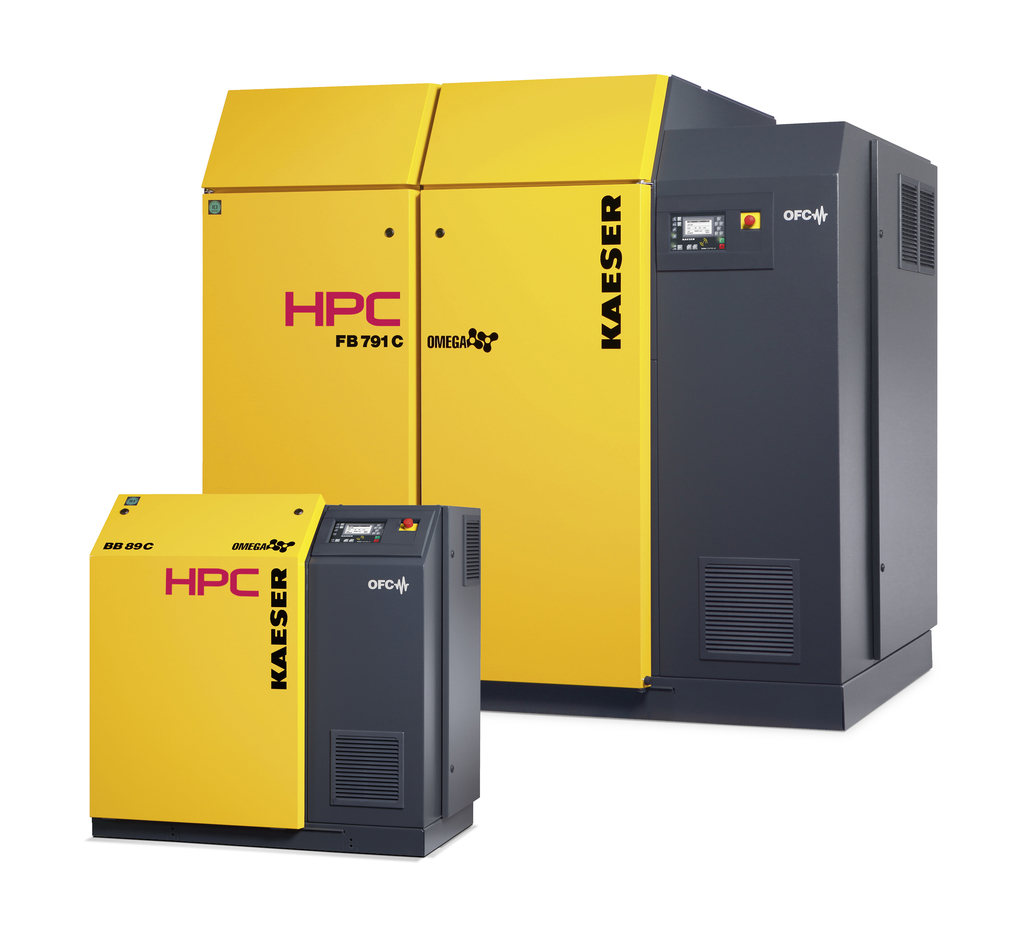

|
Edward Lowton
Editor |


|
| Home> | Energy Management | >Compressors & ancillary equipment | >Rotary blower packages |
| Home> | Plant, Process & Control | >Compressors and ancillary equipment | >Rotary blower packages |
Rotary blower packages
16 February 2015
The latest compact rotary blowers from HPC Kaeser are supplied connection-ready with integrated mains power supply equipment and monitoring, including all sensors and star-delta starter, or with a frequency converter to enable flexible speed control.

Suitable for applications such as pneumatic conveying of powdered goods, water treatment, or wherever the generation of blowing air is required from a compact and efficient unit, the range – BB69C through FB791C – delivers from 0.5 to 74m³/min at up to 1000 mbar (g), or 500mbar (partial vacuum).
The packages are CE and EMC certified. HPC Kaeser says this means less work for both the operator and system provider in terms of planning, installation, certification, documentation and commissioning. A range of motors is available to accommodate various performance requirements, whilst noise and pulsation reduction measures ensure quiet operation at all times.
The rotary blowers feature inherently intelligent design enabling system operators to benefit from energy and operational cost savings. Their space-saving component layout results in a compact footprint and, as the blowers have been designed to allow all servicing to be carried out from the front of the unit, it is possible to install several blowers side-by-side.
Components such as control valves, which would normally be installed externally, are incorporated into the units and controlled via the blower’s internal Omega Control controller. Planning, installation and documentation of centralised blower stations is therefore made even simpler.
Operating costs however don’t just depend on the efficiency of the individual components within the station. Other factors such as actual pressure and air demand, selection of appropriate and suitably matched blowers and drive systems, as well as tailored sequencing control, play a key role.
HPC Kaeser says this is where an Air Demand Analysis (ADA) can prove invaluable. With the benefit of such detailed analysis it’s possible to determine how compressed air demand varies over time, how efficiently a blower station is operating, and to what extent availability and efficiency can be further optimised. The company's Energy Saving System (KESS) is a powerful optimisation tool. This specialised planning software enables different system variants to be simulated and compared with one another, and their respective potential savings to be calculated.
- Helping power portable spray booths
- Saving energy and reducing costs with HPC
- HPC presents N2 Skid at PPMA
- Efficient filtration
- Helping enhance energy efficiency
- Efficient motors for air power
- Compact dryers
- New generation of rotary screw compressors
- Saving energy and reducing costs with HPC
- HPC KAESER: Built to last the distance

















